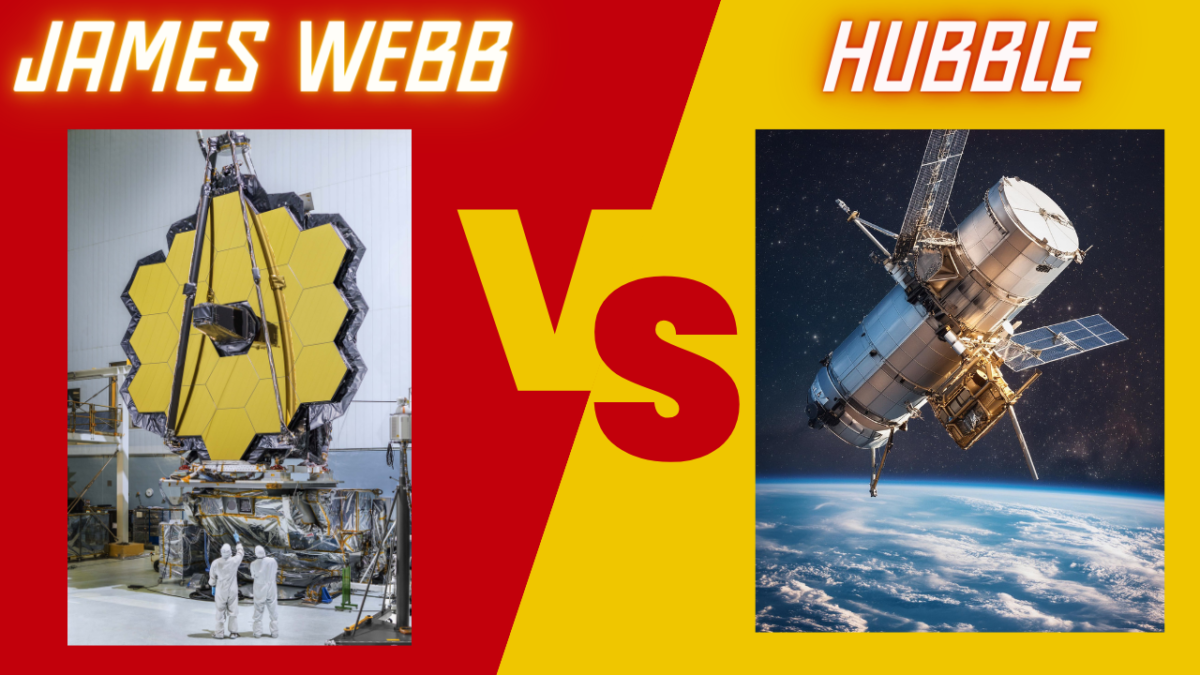Our insatiable curiosity about the cosmos has fueled centuries of astronomical exploration. Telescopes have revolutionized our understanding of the universe, pushing the boundaries of the observable and revealing breathtaking celestial wonders. Two iconic instruments stand out in this cosmic quest – the Hubble Space Telescope (HST) and the newly launched James Webb Space Telescope (JWST). While both are marvels of engineering, they possess distinct capabilities, offering a glimpse into the vastness of space from unique perspectives.
Light Years Apart: Unveiling the Invisible

The key difference between these two telescopes lies in the range of light they perceive. Imagine the universe as a vast, colorful tapestry woven with light. HST primarily observes the universe in the visible and ultraviolet spectrum, much like human vision. This allows it to capture stunning images of nebulae, galaxies, and other celestial objects with incredible detail and clarity. However, visible light can be obstructed by cosmic dust clouds, vast interstellar curtains that act like celestial camouflage, hindering observations of distant objects.
Enter JWST, a game-changer in astronomical observation. It operates primarily in the infrared region, a realm invisible to our eyes but crucial for unlocking the secrets of the universe. Infrared light has a longer wavelength that can penetrate these dust clouds, allowing JWST to peer deeper into space and observe objects previously hidden from our view. This makes it ideal for studying the formation of stars and galaxies in their earliest stages, offering a celestial rewind to the universe’s infancy.
Think of it this way: HST provides a breathtaking view of the universe’s surface, showcasing the vibrant colors and intricate details of galaxies and nebulae. JWST, on the other hand, delves deeper, using infrared vision to reveal the underlying structures and processes that shaped the cosmos as we know it.
Beyond the Horizon: A Journey Through Time
The vastness of the universe translates to looking back in time. Light travels at a finite speed, so the farther we observe, the further back in time we see. HST has pushed the frontiers of observable time, allowing us to glimpse galaxies billions of light-years away. These observations paint a picture of a young universe, with galaxies in their formative stages, providing crucial insights into how the cosmos evolved.
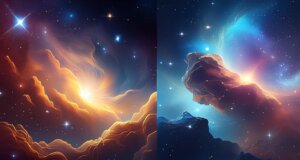
However, JWST takes this a step further. Its ability to see through dust clouds allows it to potentially observe the first stars and galaxies that formed after the Big Bang, offering a window into the universe’s very first moments. This is akin to peering through a cosmic time machine, witnessing the birth of stars and the assembly of the first structures in the universe. Imagine the possibilities – unveiling the processes that led to the formation of our own solar system and the potential ingredients for life scattered across the cosmos.
The Search for Habitable Worlds: A New Hope
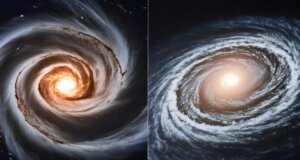
Both HST and JWST play crucial roles in the ongoing quest to find exoplanets – planets orbiting stars beyond our solar system. Imagine a vast ocean of stars, each potentially harboring planetary systems. HST has been instrumental in identifying thousands of exoplanet candidates, providing a treasure trove of potential targets for further study.
However, JWST’s infrared capabilities open a new frontier in exoplanet research. Just like heat signatures reveal the presence of a hidden animal in the wilderness, JWST can analyze the atmospheres of these exoplanets by detecting the subtle variations in infrared light as the exoplanet transits behind its host star. By identifying potential biosignatures – chemical signatures potentially indicative of life as we know it – JWST could revolutionize our understanding of life in the universe.
This opens doors to the exciting prospect of identifying planets with conditions suitable for life, bringing us closer to answering the age-old question, “Are we alone in the universe?”
A Synergistic Partnership: Unveiling the Tapestry of the Cosmos
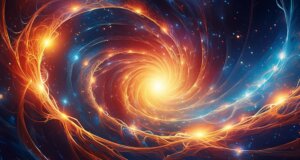
While both telescopes are incredibly powerful instruments, they are not replacements for each other. HST continues to excel in studying objects in the visible spectrum, providing high-resolution, detailed images of celestial phenomena. JWST, on the other hand, provides the crucial infrared vision to explore the universe’s hidden depths. Together, they provide a more comprehensive and holistic view of the cosmos, unveiling wonders previously unseen and propelling our understanding of the universe to new heights.
Think of it like using two different telescopes in perfect harmony. HST offers a detailed, close-up view of the celestial tapestry, while JWST provides the broader context, revealing the vastness and hidden structures within the cosmic weave.
The Future Beckons: A New Era of Discovery
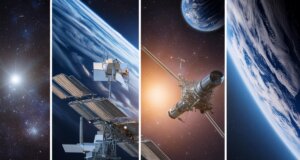
The James Webb Space Telescope marks a new era in space exploration. With its unprecedented capabilities, we can anticipate a wealth of groundbreaking discoveries – from the formation of galaxies and the composition of exoplanet atmospheres to the potential for life beyond Earth. Every image captured and every spectrum analyzed will further unravel the mysteries of the Space & Galaxy.
